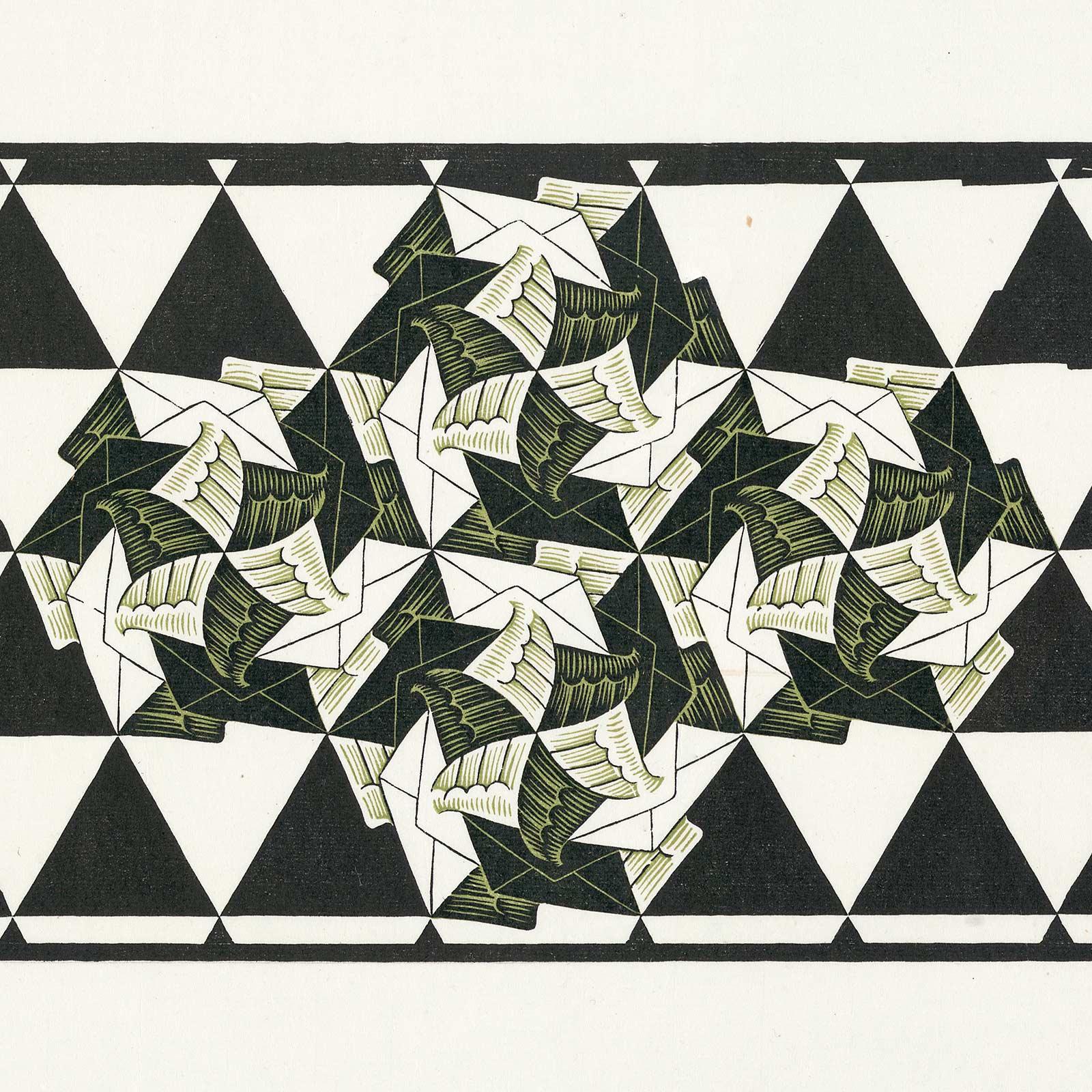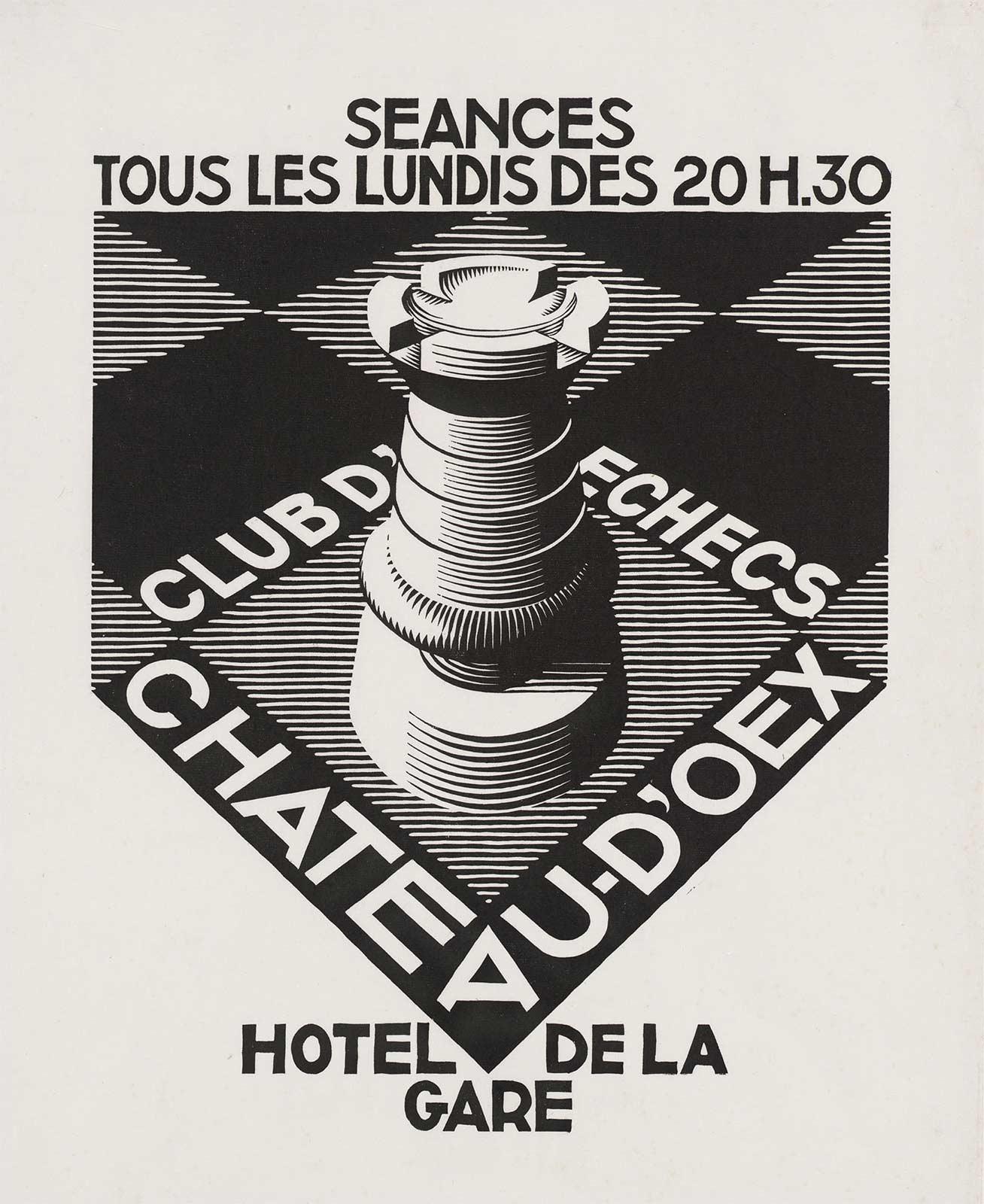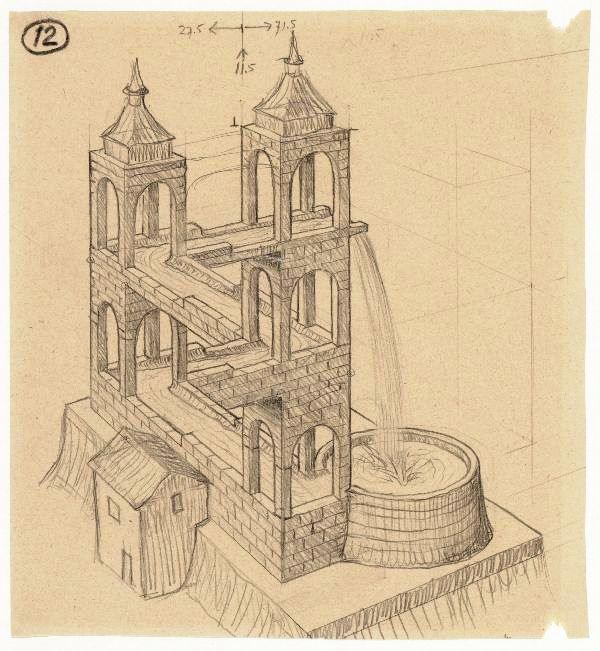

Between 1946 and 1951 Escher experimented several times with the mezzotint technique. He was fascinated by the extremely subtle chiaroscuro of light and dark that can be achieved with it. His first plans for creating his own mezzotint prints predate the war. For instance, in a letter to his friend Hein ’s-Gravesande of October 1938 he wrote:
'I would love to express myself in the technique of the “black art”, with its beautiful, velvety, deep greys and blacks—but where could I learn this technique (who still uses it nowadays?). And how long would it take before I could adequately express myself in it?'
Hence he was not proficient in this technique and he sought advice from fellow artists such as Jan Poortenaar and W.G. Hofker on how to approach it.* Dusk (Rome), from May 1946, is his first mezzotint and Plane Filling I, from March 1951, his last. In total, he produced only eight mezzotints. Although Escher was a patient man, the technique turned out to be too laborious and time-consuming for him. The most striking print of the series is Eye.
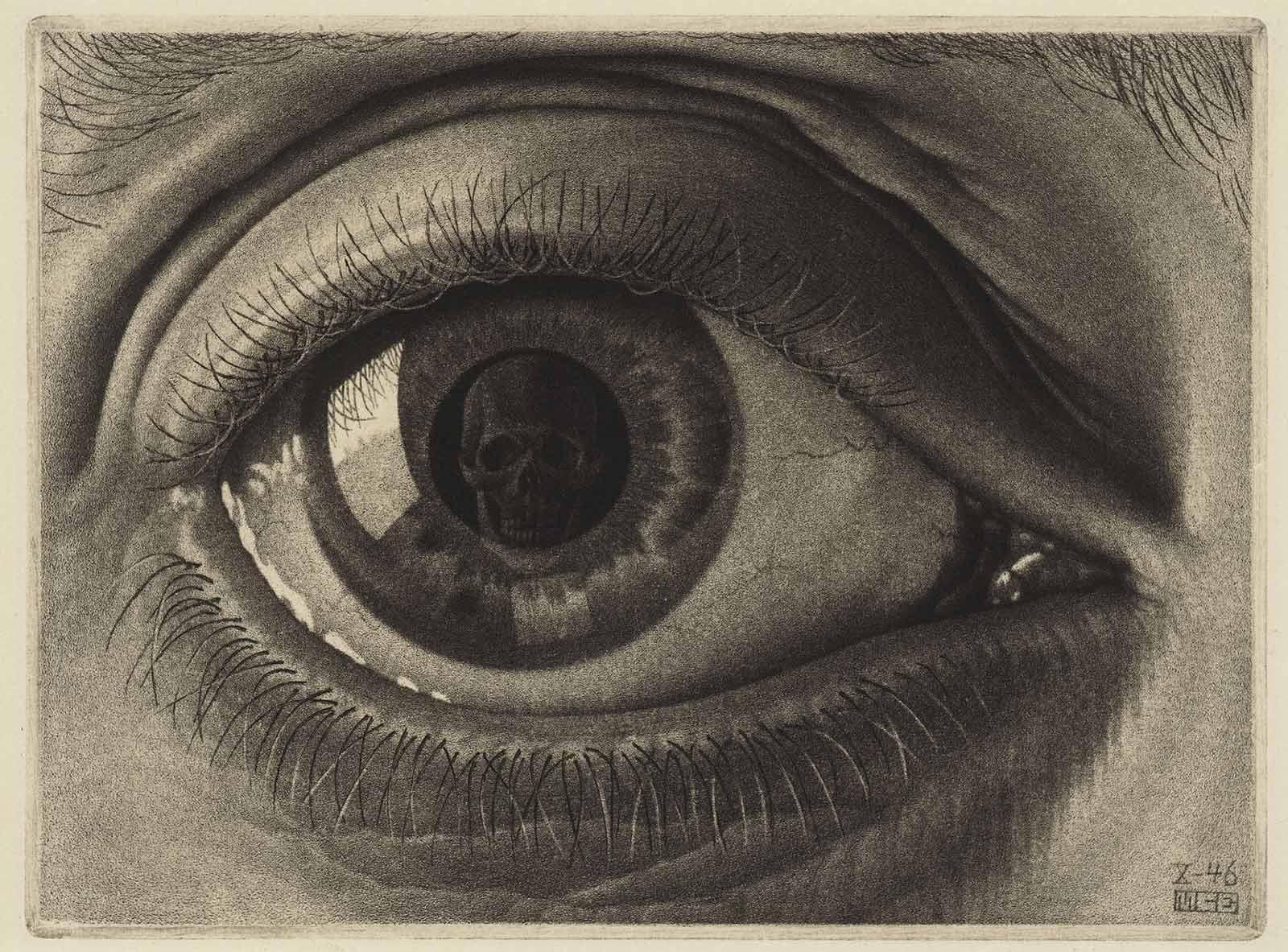
Ever since the creation of this mezzotint, in the autumn of 1946, there has been much speculation about its meaning. This is of course due to the skull that is reflected in the pupil. Escher was always amused when people talked about ‘messages’ supposedly hidden in his works. He denied any such messages being there. However, in this case such speculation was logical; though the name of the mezzotint might not be suggestive, the skull positively invites speculation.
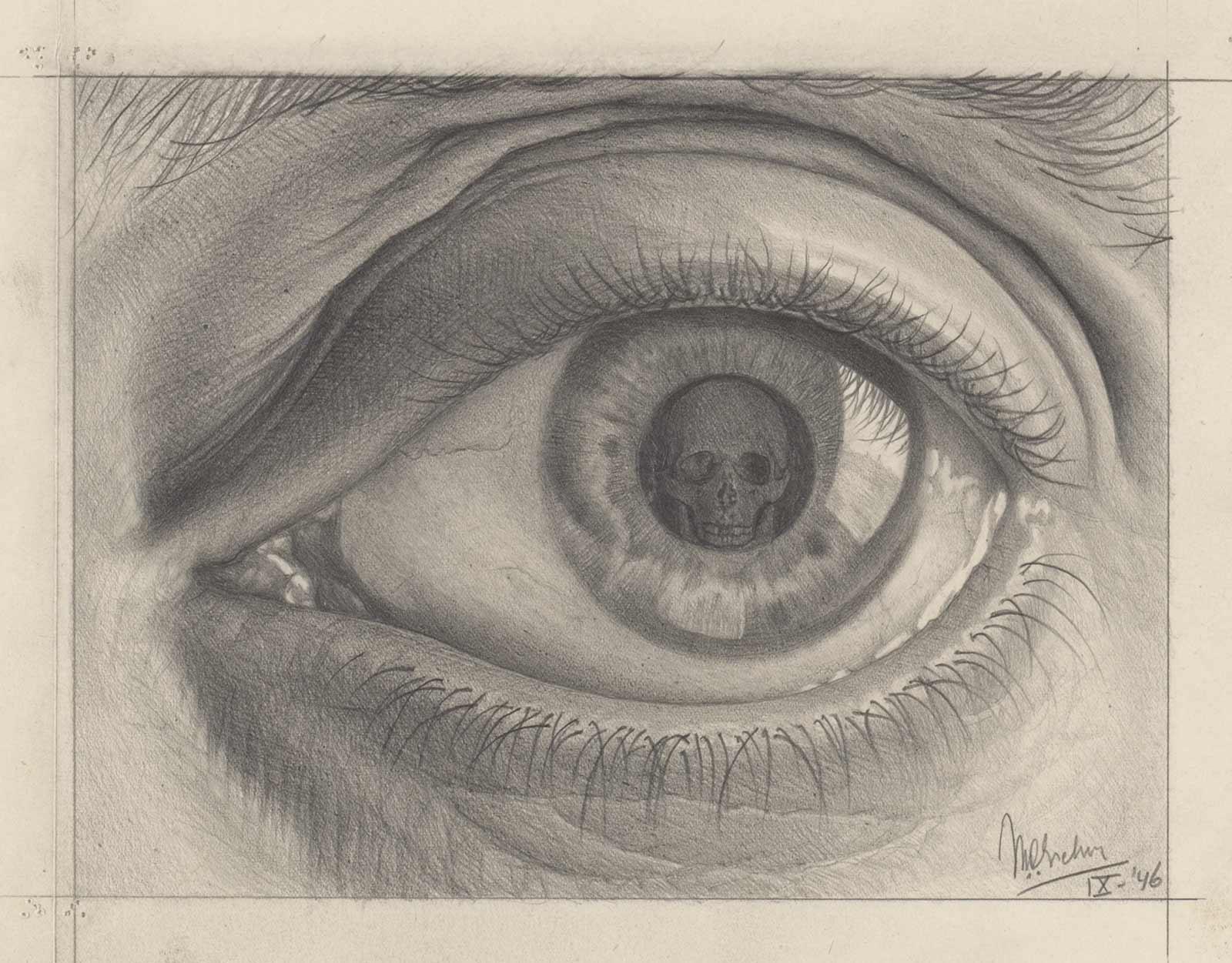
The eye is Escher’s own eye. He drew it while studying it through a convex shaving mirror, which greatly enlarged it. In his drawing and mezzotint, however, the reflection in the pupil is not his own. The viewer’s gaze is met with that of Death. Shortly after creating it, in October 1946, Escher wrote in another letter to ’s-Gravesande:
‘As the viewer always sees himself in the eye he is looking into, I decided to show a skull reflected in it. As a variant on the prints with reflective spheres. Because we are all forced to look at Death, whether we like it or not. Or He looks at us’.
Within the compass of Escher’s oeuvre, Eye fits into what Bruno Ernst, in his critically acclaimed standard work The Magic Mirror of M.C. Escher, referred to as the theme of ‘the structure of space’. It falls within the subtheme ‘penetration of different worlds’. In reality, two worlds can never be in the same place at the same time, but in art they can coexist on a flat surface. Escher was fascinated by this phenomenon all his life and experimented with it a lot in his work. There are multiple instances of him having managed to get two, sometimes even three worlds to merge so fluidly that the image comes across as completely logical to the viewer. An important tool in this regard was the spherical mirror. As early as 1920 he produced a drawing in the St. Bavo Church in Haarlem in which spherical reflection plays a prominent role. In 1921 he produced his first self-portrait in a spherical mirror. Still Life with Spherical Mirror (1934), Hand with Reflecting Sphere (1935), Three Spheres II (1946) and Dew Drop (1948) are other examples. Eye fits in this series. As in Dew Drop, here the spherical mirror is a natural one — in this case his own eyeball.
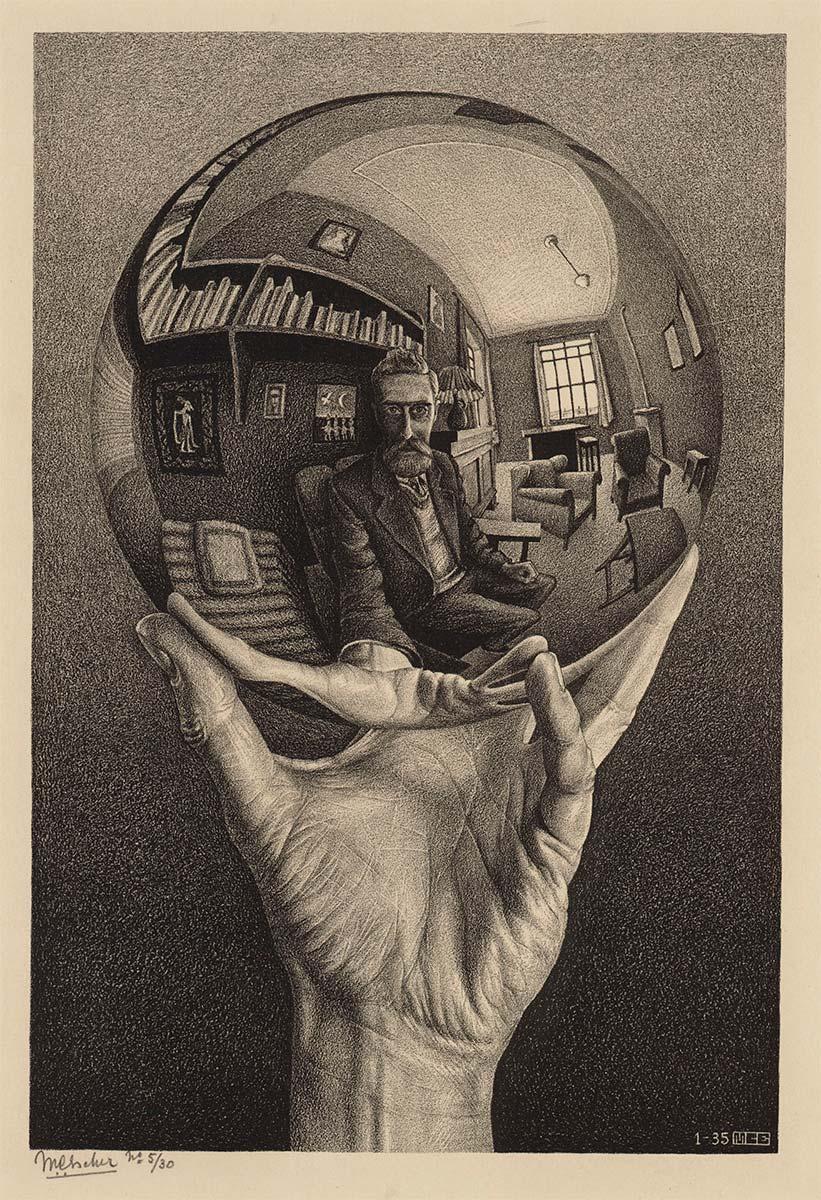
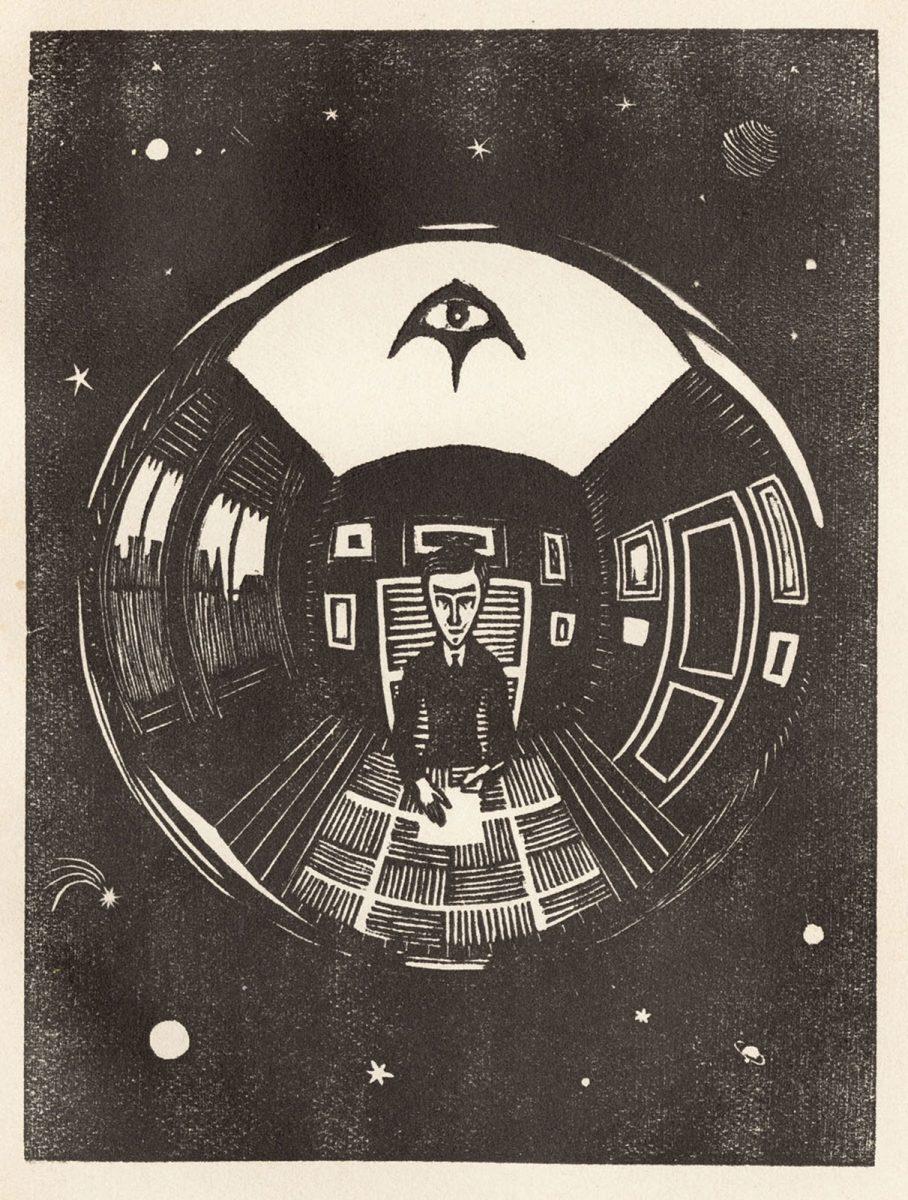
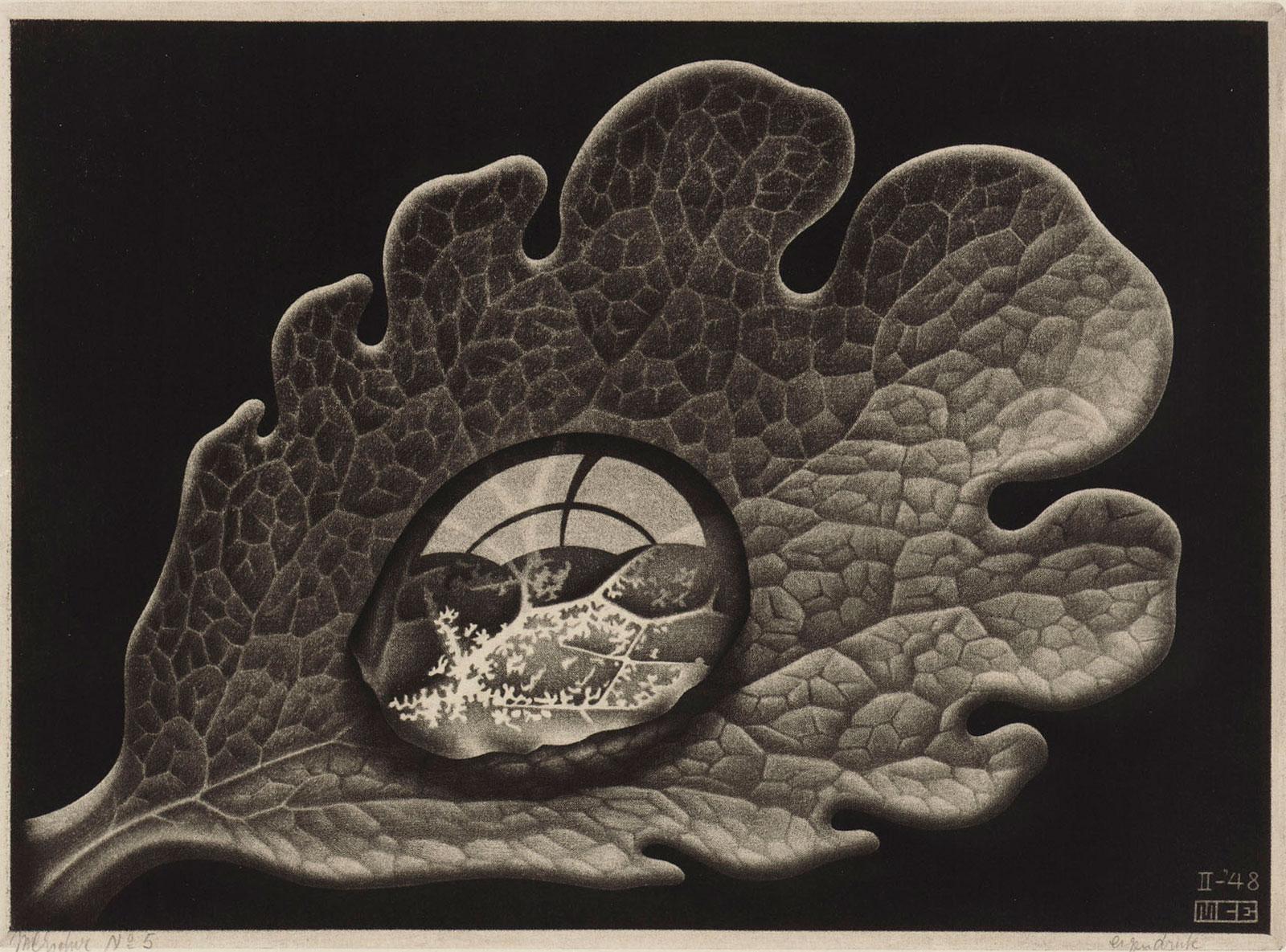
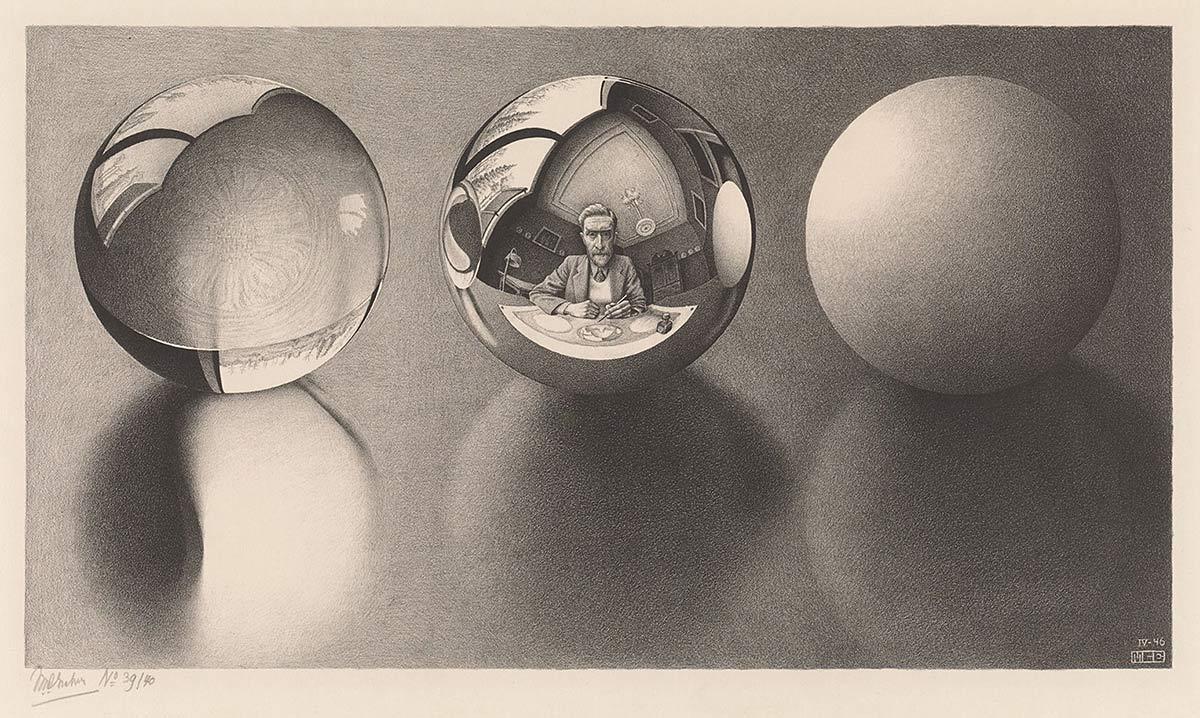
Escher once made a notorious statement that he would like to learn how to draw better. A remark that might be hard to hear for scribblers, who can only envy Escher’s incredible mastery of the pencil, knife and burin, particularly in the case of the mezzotint and the preparatory study for Eye, in which he brings his own eye to life on paper with an enormous sense of detail.
A mirrored version of the drawing covering the mezzotint. Spot the differences.
In the documentary M.C. Escher - Journey to Infinity, Escher can be seen working on this mezzotint (at 0.47). You can also see the series of prints in which the mezzotint becomes lighter as more prints are made. The seventh state is the final version, which Escher was the most satisfied with. The English version of the documentary is narrated by Stephen Fry.
English trailer
https://vimeo.com/ondemand/escherdoco
Source
[*] Wim Hazeu, M.C. Escher, Een biografie, Meulenhoff, 1998, page 305
More Escher today

